The Zeiss Loxia Planar 2/50 offers all the benefits of manual lens: a great focusing ring, very solid build quality and a small size but it gets rid of most disadvantages like outdated coatings, adapters and you get full exif info.
09/07/17 Update by Bastian: I have just recently been looking for a fast standard lens to use for Milkyway stitching (see this article) and compared this lens and the Sony FE 55mm 1.8 side by side. Therefore I added a few bits from these comparisons.
A German version of this review can be found on phillipreeve.de.
Sample Images
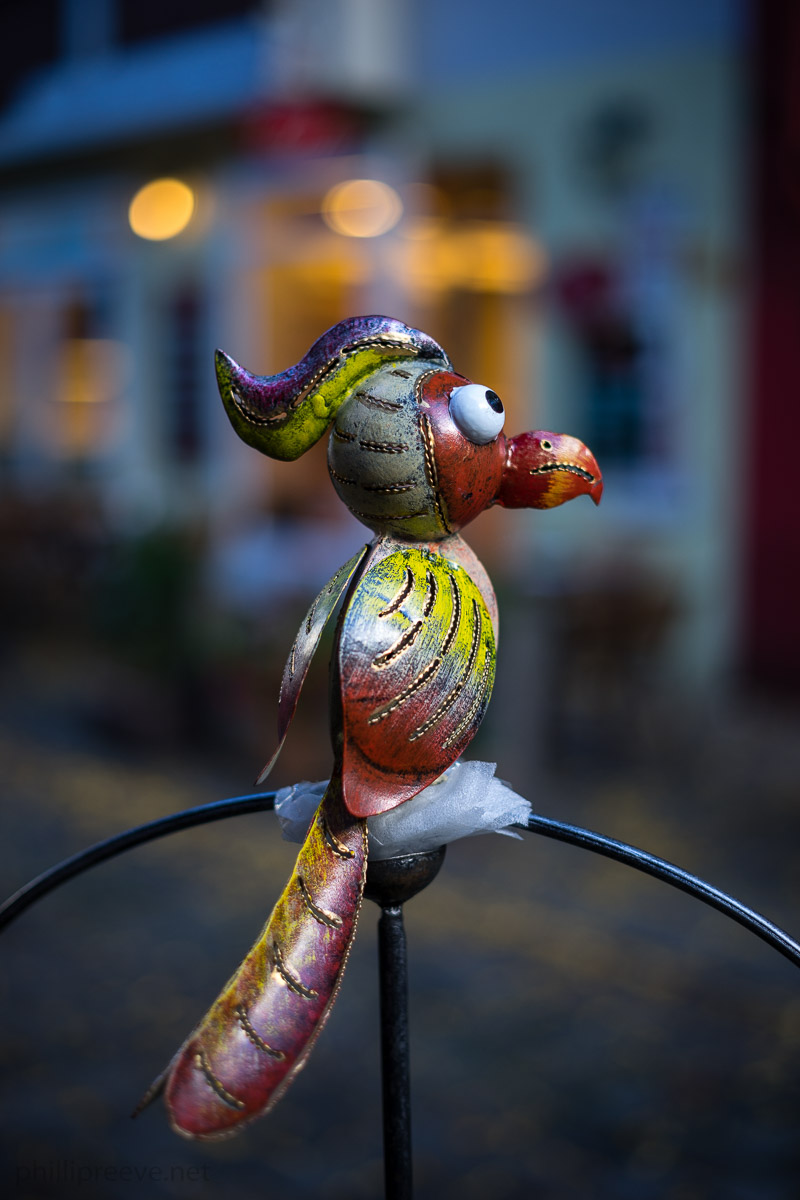
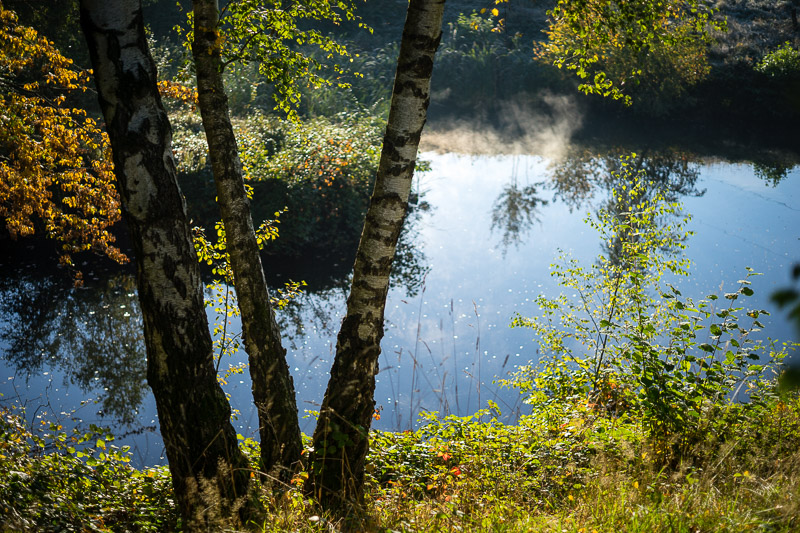
Specifications
-
- Diameter: 62mm
- Length: 59mm
- Filter Diameter: 52mm
- Weight: 320g
- Number of Aperture Blades: 10 (straight)
- Short focusing distance: 45cm
- Max. reproduction ratio: 0.14
- Elements/Groups: 6/4
- Mount: Sony E
More details can be found in Zeiss’ official data sheet.
The Zeiss Loxia 2/50 sells for $949 at Amazon.com or B&H Photo (affiliate links). In Germany you can buy it for 849€ at Amazon.de (affiliate link)
Disclosure
The Zeiss Loxia 50mm 2.0 was kindly provided free of charge by Zeiss Germany for reviewing purpose.
Comment from Bastian: I bought mine at retail.
Build Quality
As good as it gets. The lens feels very solid and it is a joy to handle.
Most anything is made from metal and tightly assembled. This includes the inner barrel. So unlike Sony’s FE lenses this lens is metal on the inside as well.
Unlike all Sony FE lenses the lens does have a rubber gasket around the mount. Zeiss doesn’t claim any weather resistance but I would feel more confident about this lens than about any Sony FE lens in bad weather conditions.
All markings are engraved and filled with paint.
Handling
This is one of the smallest FE lenses, very similar in size to the FE 2/28 and a centimeter shorter than the FE 1.8/55. It is a bit heavier than both though, I think this is testament to the solid build quality.
Handling on the Sony a7 is superb, the lens has just the right size and weight.
The focusing ring turns about 100 degrees from 45cm to 1m and a further 80 degrees to infinity. The focusing ring feels very smooth and it is a bit textured. I wouldn’t know how to improve it, using it is a joy. The lens has a hard infinity stop but it wasn’t well calibrated on my copy and focused a little behind infinity.
The aperture ring is a bit close to the mount and not elevated, I had to get used to that because it is a bit tricky to tell were it begins and ends. It stops down in 1/3 stops from f/2 to f/22. Every click is well felt and the resistance is high enough so that you don’t accidentally change the aperture.
There are almost no non moving parts to grab to mount or unmount the lens, if this is something that may bother you have a look at the Loxia Lens-Grip from PocketPano.
Lens Hood
The hood is made from metal and clad with black velvet on the inside. The locking mechanism seems solid enough.
Unusually the hood isn’t attached in front of the lens but around it.
Features
You can de-click the aperture with a special tool which apparently is a feature important to videographers (who won’t like the very obvious focus breathing).
The lens will provide exif information. The lens is reported as E 50mm F2 and the camera shows you the aperture. You have to use the aperture ring though and there is no way to get automatic aperture control.
The lens reports to the camera when you turn the focus ring. So you can use the automatic magnification feature of the a7 series which will magnify the image the moment the focus ring is turned. Some people found it very useful, I prefer to magnify manually.
Image Quality
Vignetting
Vignetting at f/2 is quite pronounced and easily visible in images. Stopping down to f/2.8 reduced it a lot but some vignetting remains even at f/8.
Flare Resistance
Thanks to modern coatings the Loxia 2/50 hardly loses any contrast when a bright light source is in the image. This is the worst case of contrast loss I could provoke:
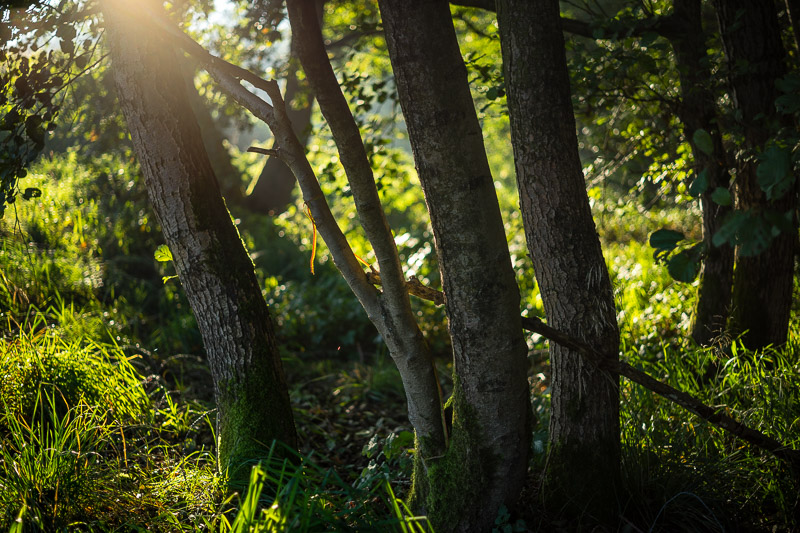
If you provoke it you will see some ghosting:
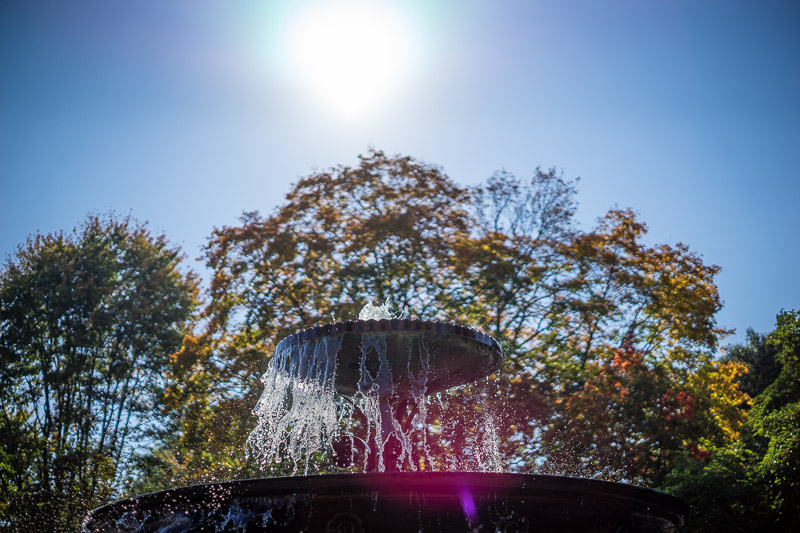
Distortion
Typically for a 50mm lens the Planar shows a small amount of barrel distortion. For critical architecture work you might want to correct it or buy a $20 Minolta MD 2/50 which is distortion free.
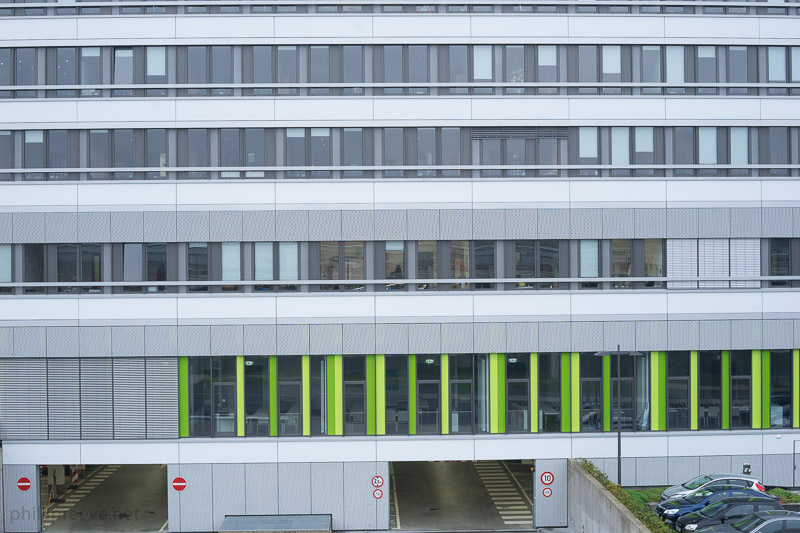
Chromatic Aberations
Lateral CA is very, very well corrected, I don’t see any.
Color fringing outside of the focus plane is quite obvious at f/2:
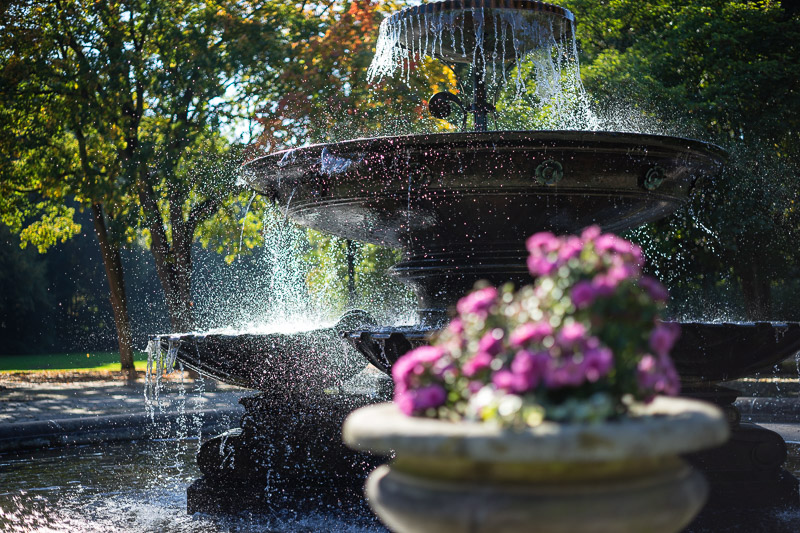
100% crop | f/2
Bokeh
Bokeh isn’t a strength of the Loxia 2/50. Out of focus highlights have a defined edge and so backgrounds appear a bit nervous.
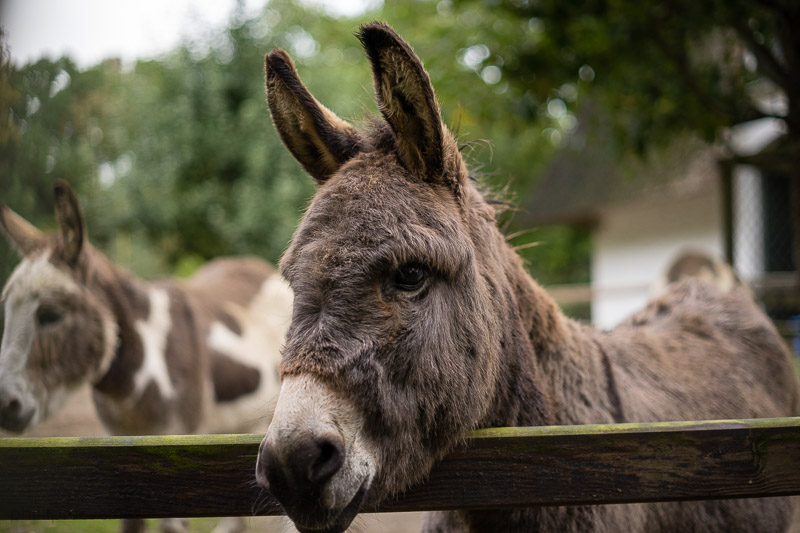
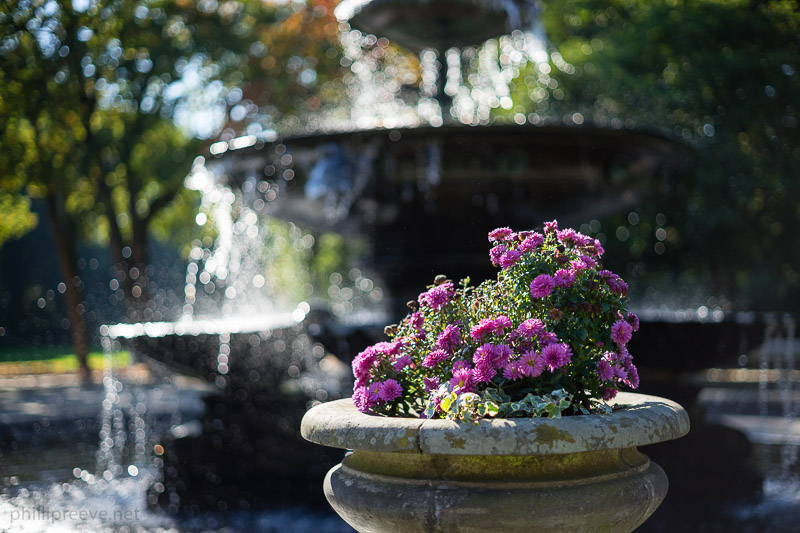
Near the close focusing distance this isn’t an issue, because anything is blurred a lot backgrounds are rendered smooth:
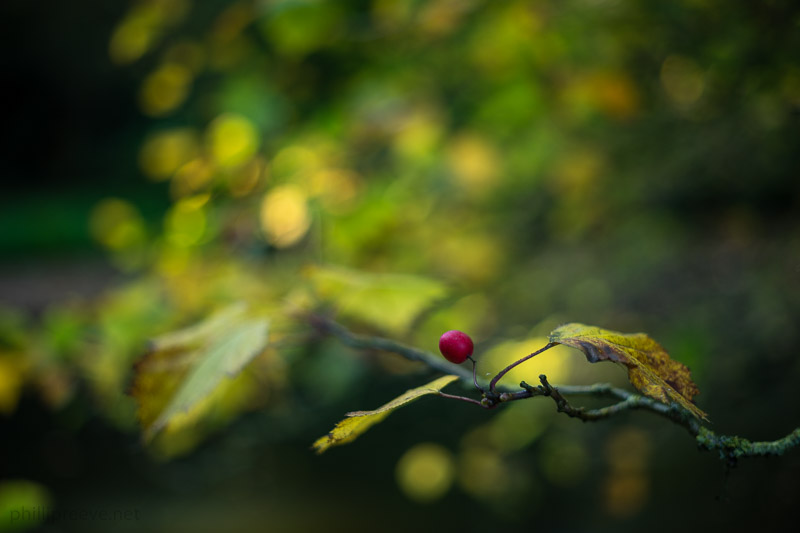
Thanks to 10 aperture blades blur discs remain round when the aperture is closed:
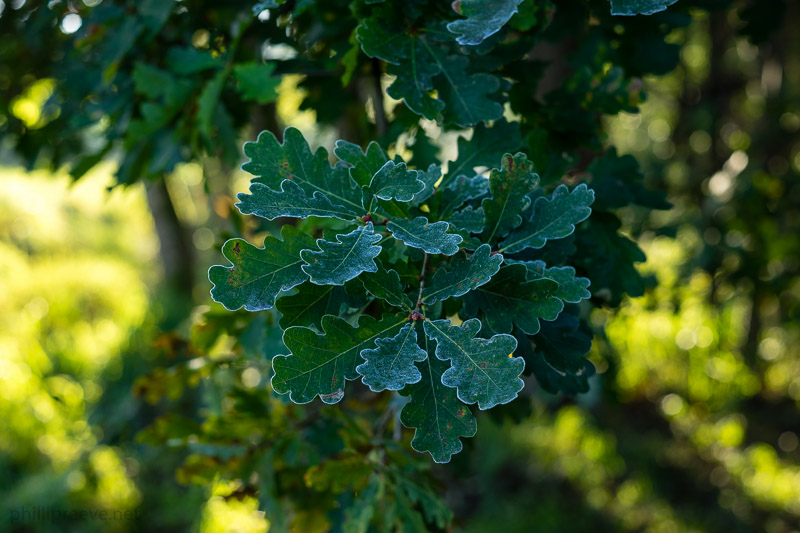
Foreground bokeh is quite smooth, check out the image of the fountain under CA.
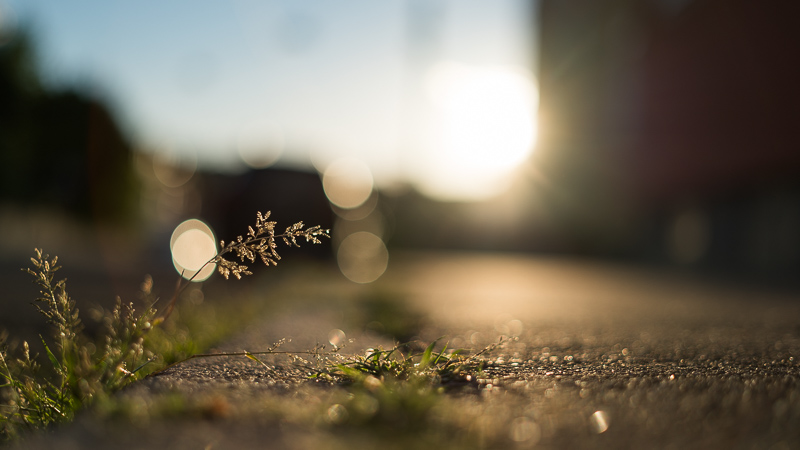
Comment from Bastian: similar to the Loxia 21mm 2.8 the iris is a bit closed even wide open, therefore you might encounter light circles not being perfectly round even at f/2.0.
Sun Stars
The Loxia 2/50 draws beautiful 10-pointed sun stars:
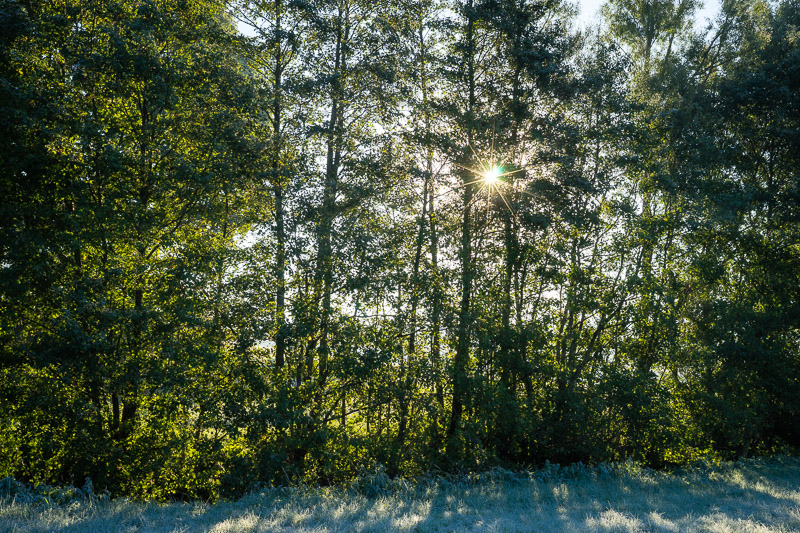
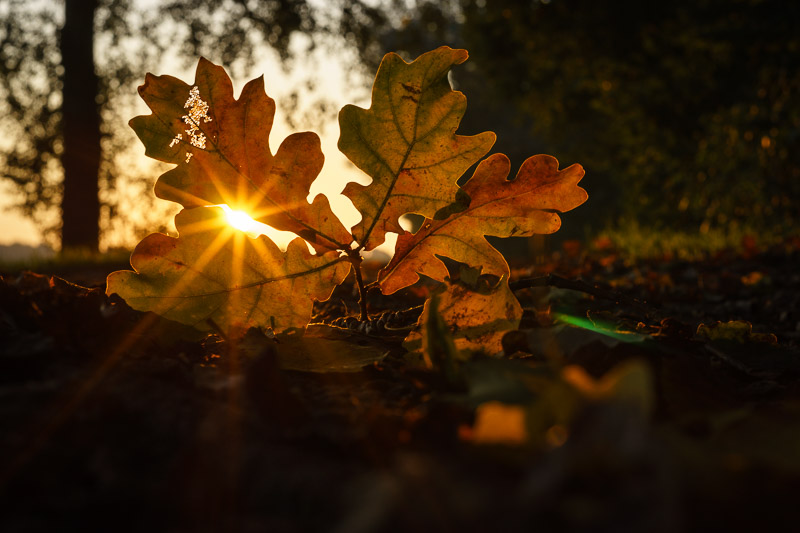
Sharpness
Compared to other classic 50mm lenses the Loxia is a very good performer.
At f/2 contrast is very good and the center is very sharp. The coners aren’t as good but they are a lot better than with other classic normal lenses. I think they are less sharp than with the FE 1.8/55.
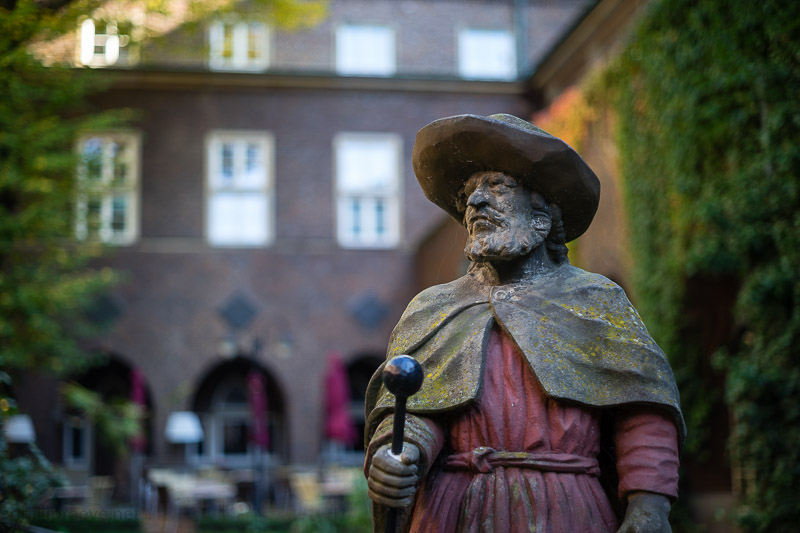
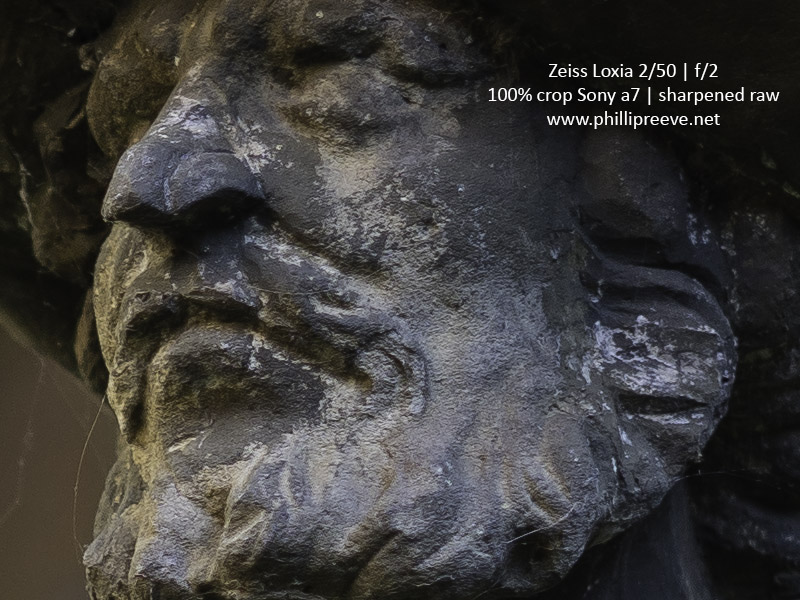
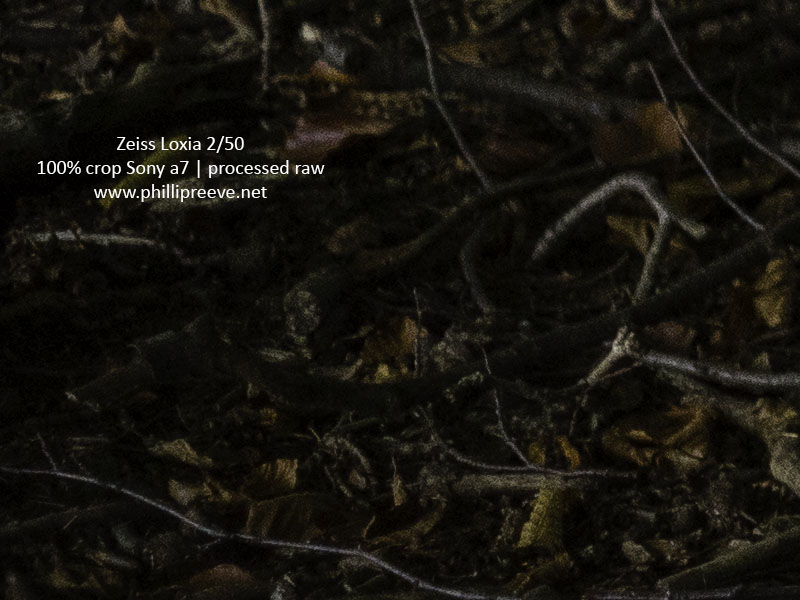
From f/5.6 the images is very sharp to excellent across the frame:
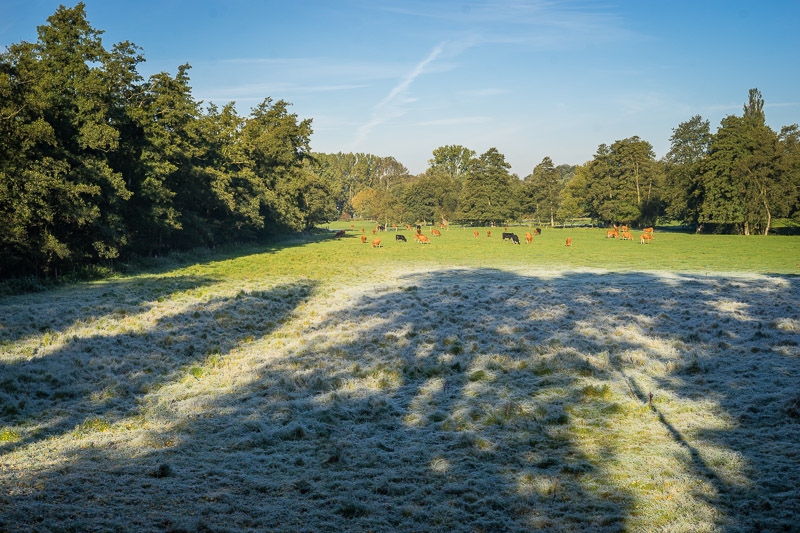
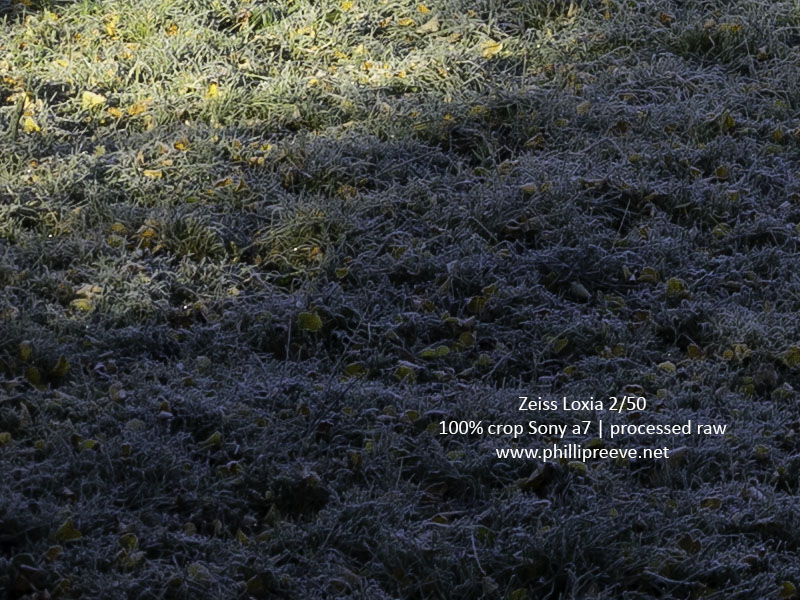
Comment from Bastian: I shot a series on the 42mp A7RII and compared the Loxia directly to the Sony FE 55mm 1.8:

Wide open in the center I prefer the Loxia which shows more contrast and more details*. Interestingly the corners don’t look too different. The Loxia’s problems are in the midframe, where there is a significant drop in resolution, which is also reflected in the MTF charts shown below.
You really need to stop down to f/8.0 to get the best performance in the mid frame area.
* I was very unhappy with the focus by wire mechanism in the Sony FE 55mm 1.8 for achieving critical sharpness. With the A7rII and maximum magnification in LiveView you will notice the motor in the lens isn’t stepless and I am not so sure there was a step where I would have needed it for optimal sharpness…
Here is the MTF-graph from Zeiss:
Coma
Before: Loxia 50mm 2.0 @ 2.0 | After: Sony FE 55mm 1.8 @ 1.8 | 100% crops from extreme corner, Sony A7s
Comment from Bastian: as I was interested in how this lens behaves for astrophotography the coma correction was very important to me. To be honest I was expecting the FE 55mm 1.8 to be significantly better but this wasn’t the case.
The deteoriations are a bit bigger with the Loxia, but the FE often shows very contrasty purple areas around point light sources which can also be very noticeable.
Conclusion
Good
- build quality
- very well balanced
- very enjoyable manual focus
- very sharp from f/2
- high contrast
- nice sun stars
Average
- value for money
- out of focus aberrations
- coma
Not Good
- bokeh could be smoother
- more vignetting than competition
- no AF
- midzone dip in sharpness
The Zeiss Loxia Planar 2/50 T* is a joy to use. It feels very well made, the focusing ring is very smooth and it is well balanced on the Alpha 7. Everyone who enjoys to focus manually will like the Loxia a lot.
Optically it is one of the best 50mm lenses around but it doesn’t quite reach the performance level of the Sony FE 1.8/55. Most obvious is the somewhat nervous bokeh which can be a distraction for some shots.
I think it is an attractive option for photographers (like me) who prefer a manual lens over an AF lens with sluggish manual focusing like the FE55.
The Loxia is sharper than any older manual lens, has modern coatings, you don’t have to deal with adapters and you get Exif information. But of course you also pay quite a bit more for it and you have to consider how much these advantages are worth to you.
All in all it is a very enjoyable lens, I found it more enjoyable to use than the FE 1.8/55 but the FE55 is a bit better optically.
Comment from Bastian: for shooting landscape and architecture I perfer this lens over the FE 55mm 1.8. The Loxia shows a little more contrast and the sunstars are more up to my taste but the really important thing is the absence of focus by wire. I really struggled achieving optimal sharpness with the FE 55mm 1.8 whilst this was never an issue with the Loxia 50mm 2.0.
As a general purpose lens I might also rather recommend the FE 55mm 1.8.
—–
If you consider buying the Loxia 2/50 please use one of the affiliate links below, your support is what makes reviews like this possible. THANKS!
The Zeiss Loxia Planar 2/50 sells for $949 at Amazon.com or B&H Photo or 849€ at Amazon.de.
—–
More Image Samples
All images are processed in Lightroom from Raw. Some more samples in my flickr album.
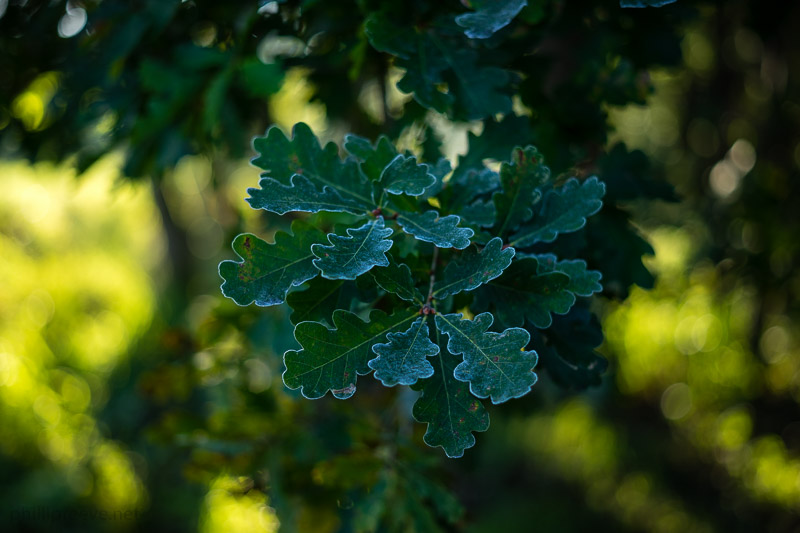
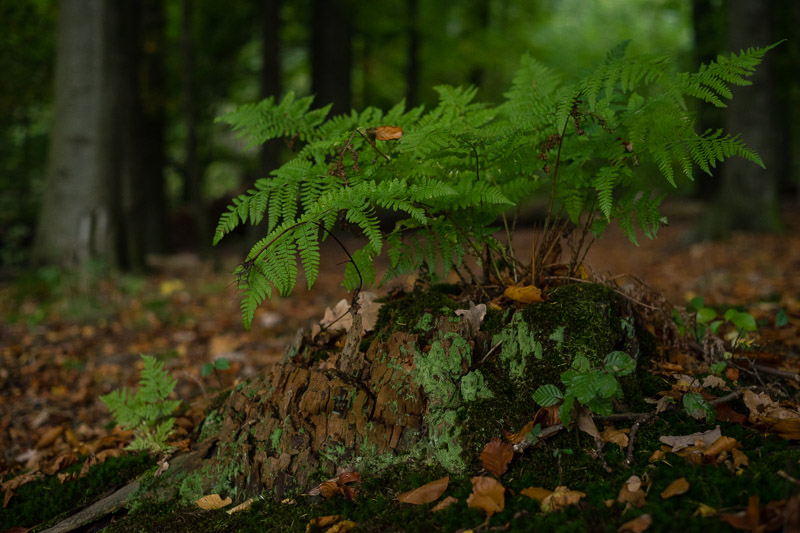
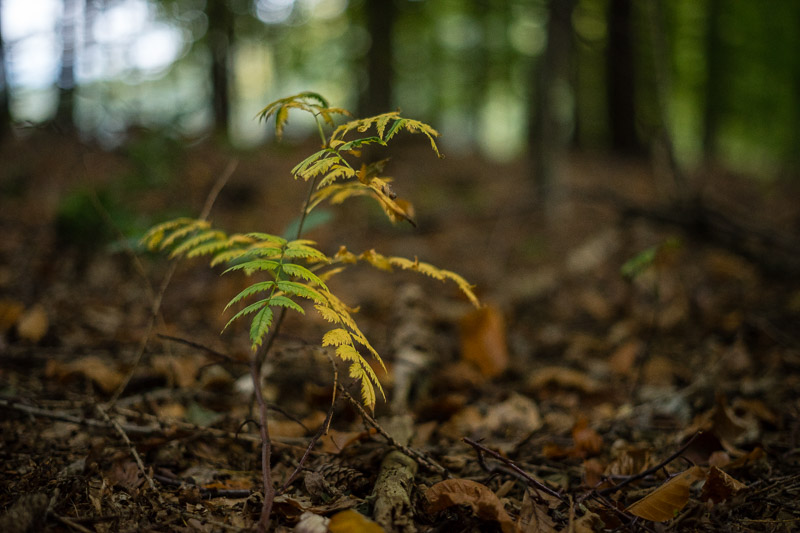
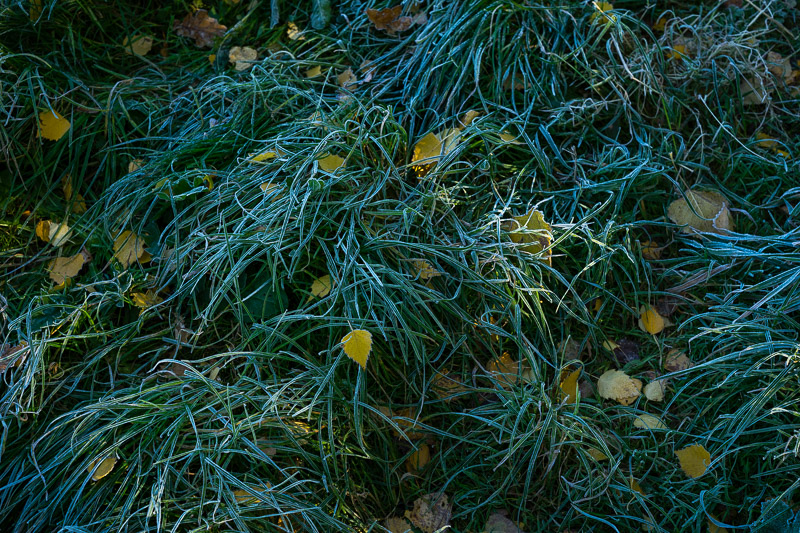
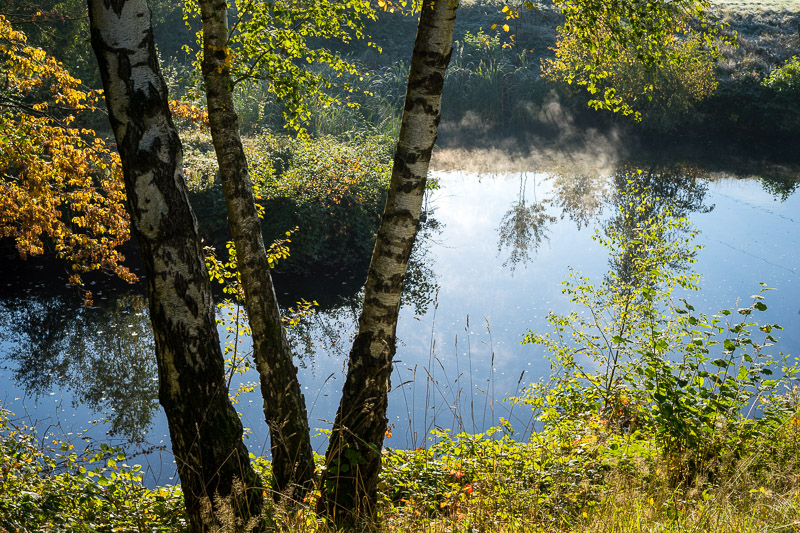
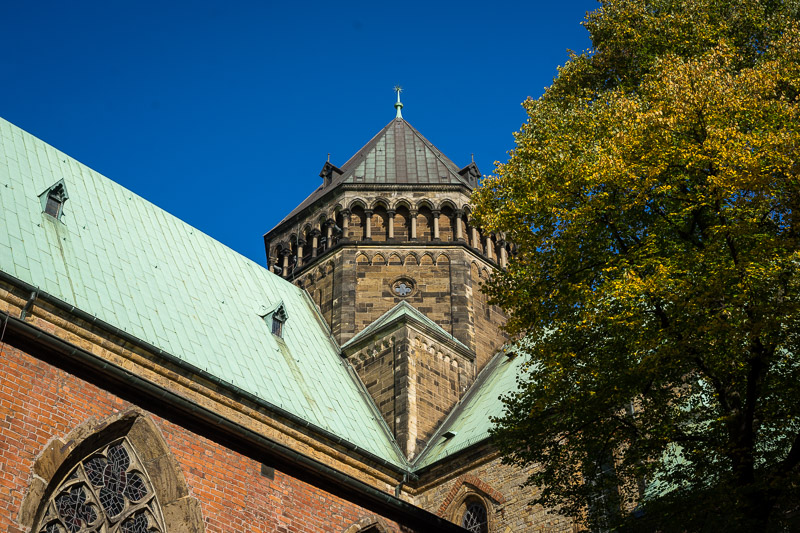

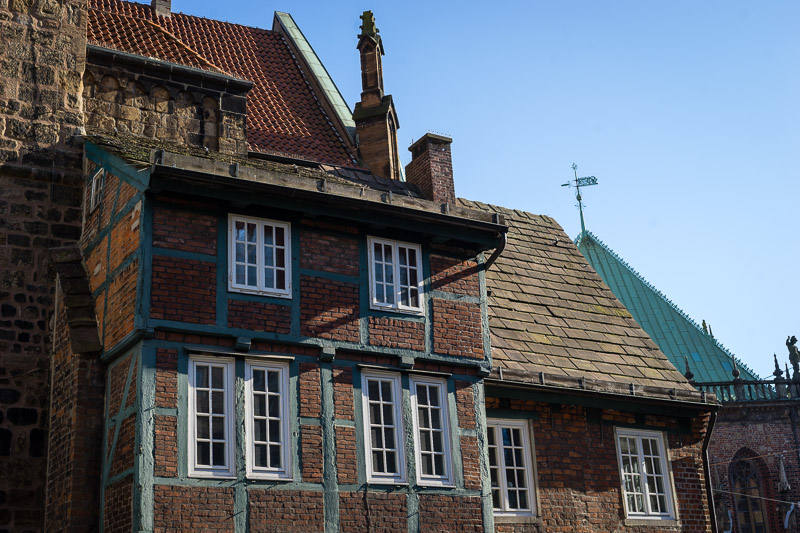
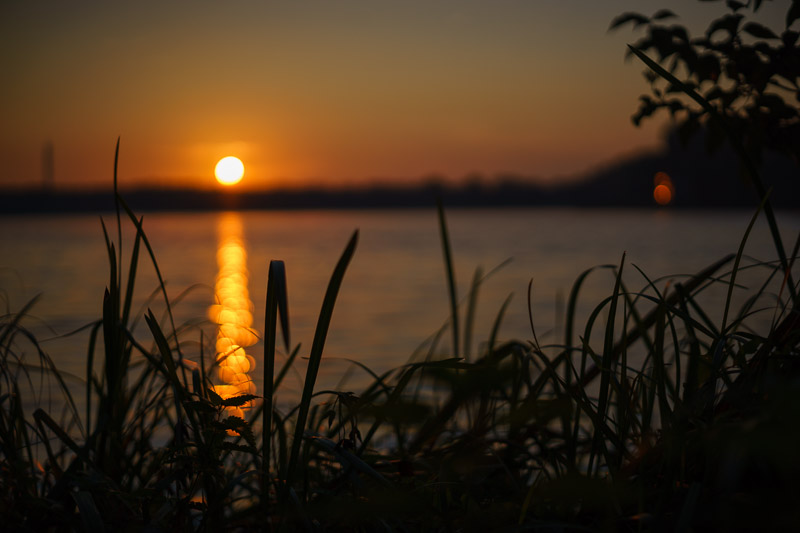
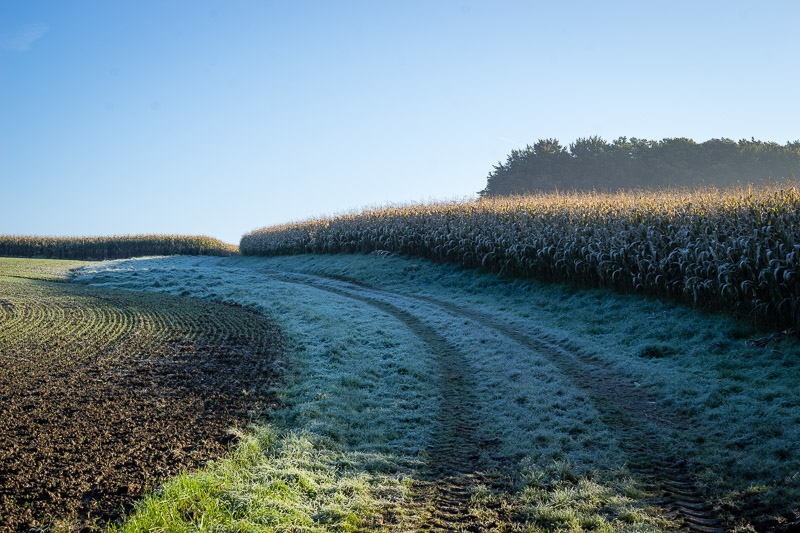 Zeiss Loxia 2/50 | Sony a7 | f/8| full resolution
Zeiss Loxia 2/50 | Sony a7 | f/8| full resolution
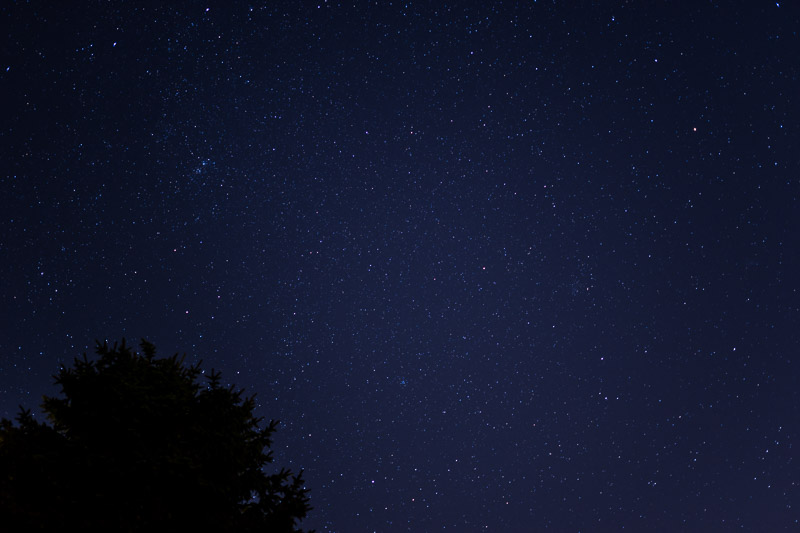
Other Articles
This site contains affiliate links. If you make a purchase using any of the links marked as affiliate links, I may receive a small commission at no additional cost to you. This helps support the creation of future content.
Latest posts by Phillip Reeve (see all)
- Review: Samyang AF 75/1.8 FE - April 12, 2021
- The FE-List now has 113 lenses on it - March 25, 2021
- 2020 – Year’s end review - December 28, 2020
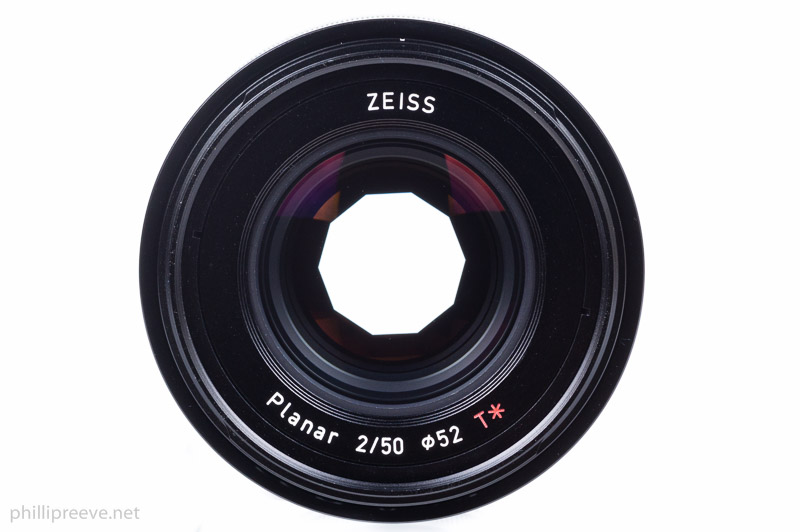
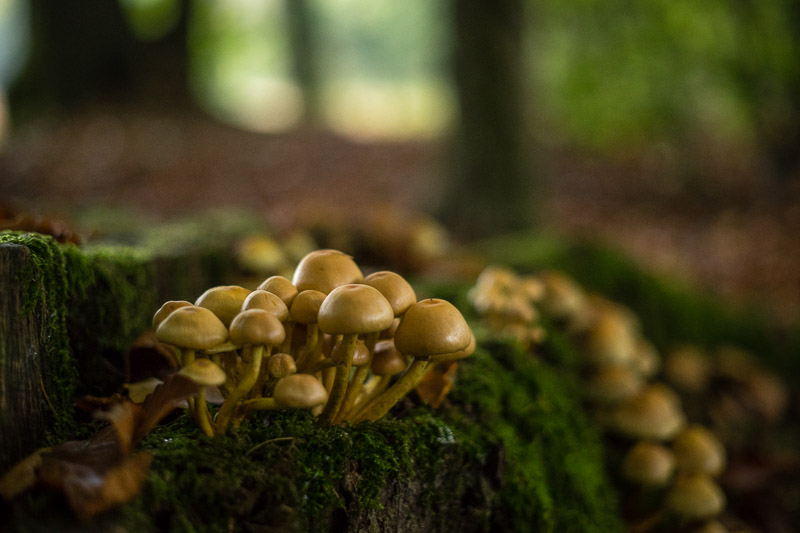
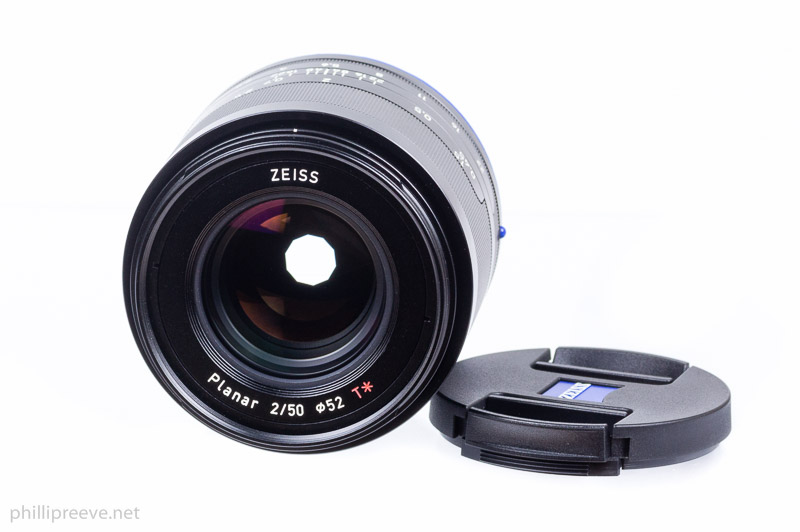
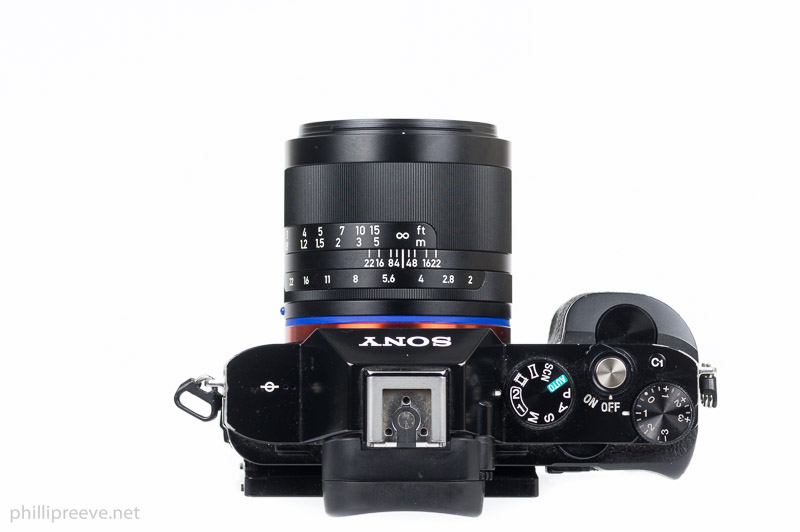
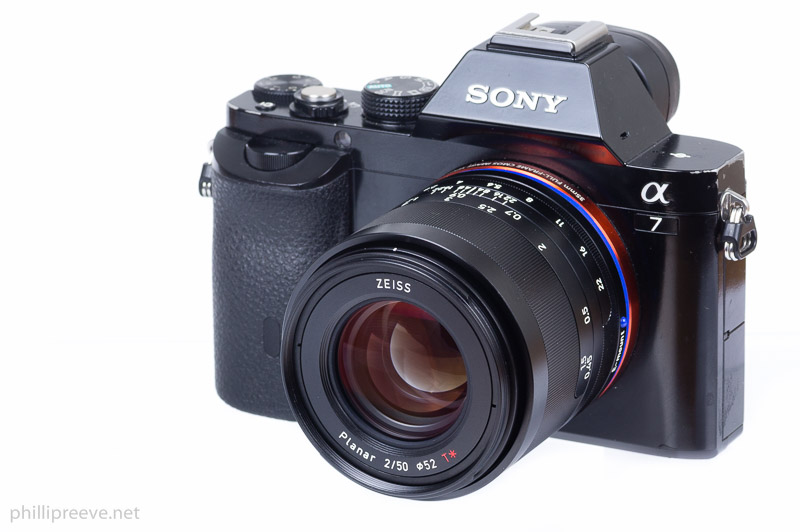
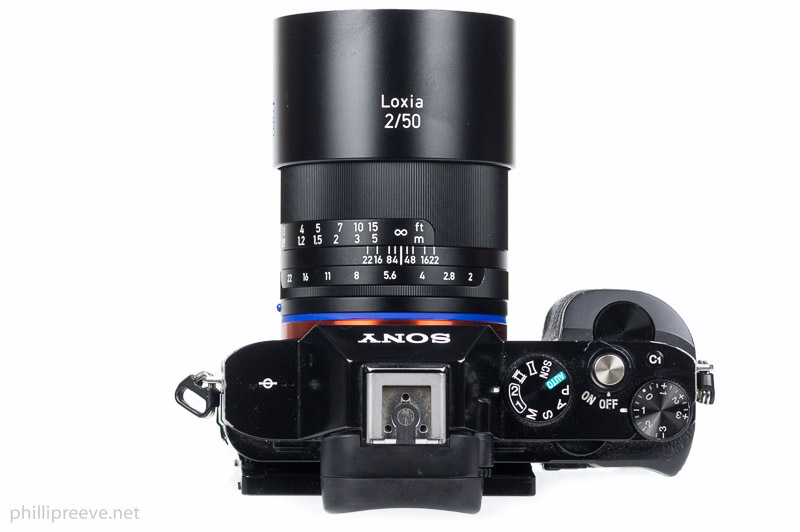
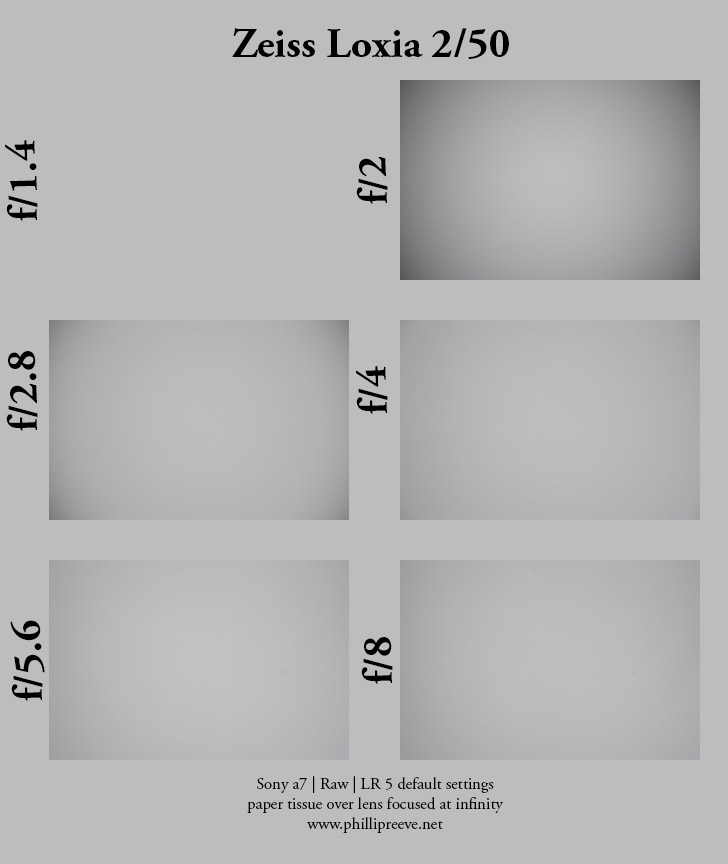
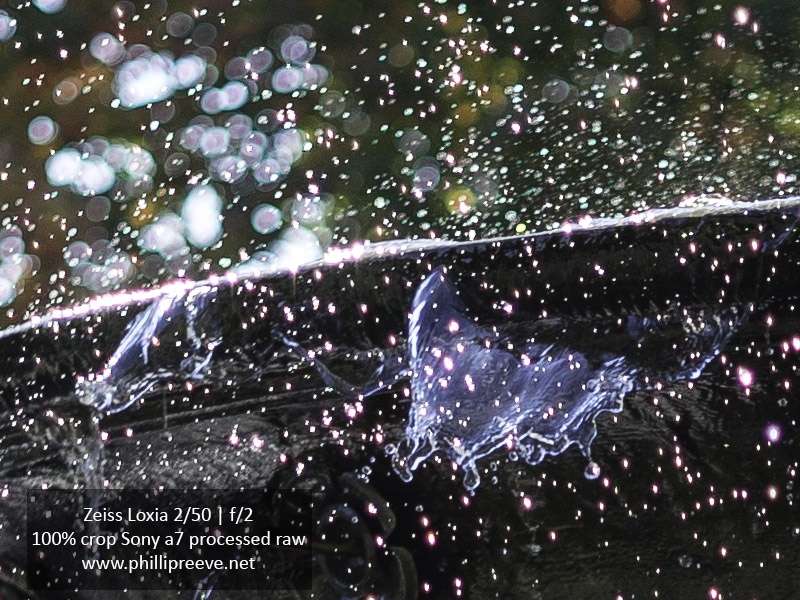


Hi Phillip,
Thanks for a very non-biased and interesting review.
I lusted after the Loxia for a while!
I then took your advice and bought the Minolta 2/50. Image quality is, to my eyes and on any decent computer screen, at least as good as the Loxia for a fraction of the price. Little or no distortion, great colours, decent if unremarkable bokeh.
Thanks so much.
Regards,
Robin
Yeah, I kind of agree. You need to do more post processing to up the contrast and stay away from F2..the mino has contrast and choma issues..but you can always grab the 1.4 and stop it down. I really like the loxia but that bokeh is a bit distracting.
Phillip – thanks for the review! I’ve been hoping you would review this lens for awhile, and hopefully you’ll be able to get your hands on the 21mm Loxia at some point here.
I’m still sticking with the Minolta 50mm F2 and 50mm F1.4 for now, but I will admit my jealousy over those sunstars…I wish a legacy lens gave some stars like that!
Phillip is just a good photographer that make every lens look like a good performer. Well, except the Pentax macro…
Oh I own quite a few lenses I am not too thrilled about but usually I don’t bother to spend about 10hours on review of a lens I didn’t like.
Thank you Phillip for your comprehensive review.
Please consider doing a shootout between the Loxia and the Minolta 50mm f2.
I think your readers (including me) would find it very interesting.
That shootout was planned but then the weather turned bad Zeiss only loaned me the Loxia for about 10 days so no shootout 🙁
Ah… Bad luck, would have been intersting…
Curious that the loxia 50 looks like a such a nice lens while that the loxia 35 seems less interesting…
I have both the Loxia 50 and the 35. I like both lenses very much, but the 50 is definitely superior and is probably the best 50mm lens that I have ever used. Before making the purchase, I debated about getting either the Loxia or the FE55/1.8, which is slightly sharper. But after looking at many images online from both lenses, I decided that I preferred the rendering of the Loxia. To my eyes, it gives a more three dimensional feeling, and objects have a more solid, modeled quality. I have not regretted my decision. This lens is a beauty.
Hi Phillip,
thanks for your great reviews!
I own some of those old Canon FD lenses and enjoy to use them on my a7II. One of those lenses is the Canon FD 50 mm F1.4.
What I’m wondering about is, if the Loxia 50 mm is worth to spend € 650,- (used) for, if you compare it to the Canon.
Based on your own experience with both lenses and if you look at the pictures you get out of them, do you think that money would be good invested into the Loxia?
And if so why, or will it be at the end difficult for me to see a difference between the pictures I’m able to take with the Canon?
Thanks for your thoughts
Rgds
Andreas
Hi Andreas,
the Loxia is a bit contrastier and it has much betetr corners at wider apertures. It also feels much nicer than the nFD 1.4/50. Flare resistance is another advantage. In general the difference in image quality won’t too obvious but in certain scenarios you will notice the difference.
Personally I would prefer the Loxia as my only 50mm lens. But it depends on your personal financial situation if it is worth 650€.
Hi Phillip,
Thanks for that.
I think for the moment I stay with the Canon. So far I really like the results. Maybe one day I get either the Loxia or the FE 55 / 1.8 cause of the autofocus.
Beside that you prefer the manual focus of the Loxia, what about the pictures you get out of the FE 55 compared to the ones of the Loxia, which difference do you see there?
Out of my old Canon lenses, in addition to the Canon Fd 50 mm F1.4 I really like the Canon FD 85 mm f1.8.
Maybe one day you will write an article about that one as well:-)
Keep on with your great reviews.
Rgds.
Andreas
Hi Andreas,
as mentioned in the review the FE55 has smoother bokeh and this would be the most obvious difference. It is also a little sharper in the corners at wider apertures but this shouldn’t matter too much
The Canon 1.8/85 is on my radar, might be that I will review it in 2017 😉 too many great lenses out there
Hi Phillip,
thanks and keep on with your great reviews
Im glad that I found this site. I use Pentax, Canon, and Nikon DSLR for a long time and Im going to graduate on next year. I have Pentax K-5 but it’s too old to use. Actually, I can not rely on DSLR anymore due to AF accuracy or AF micro adjustment issues and size. It seems that A7ii series are awesome except for few cons. Im thinking to get standard zoom and prime lenses for my career. Both 50mm and 24-70mm are my fav focal lengths. Beside a zoom lens, what do you think about Loxia 50mm F2 VS FE 55mm F1.8? I tried both at B&H but not certain which one to choose. I felt that 55mm is quite boring to use and quite longer than others.
I like the optics of the Sony FE55 better but I prefer the handling of the Loxia.
Hi Benjamin.
Could you explain in what way the 55mm is boring? 🙂
Hi Phillip,
How would you compare the loxia 50 with the CV 50mm 1.5 Nokton, which would you prefer?
The Lox is pretty great for landscapes while the CV is nicer for portraits so it depends on your priorities. I think I would prefer the Nokton.
Phillip, thanks for the review. Loved your photos and your objectivity. I already own the Canon FD50/1.8, Zeiss FE 55/1.8, Mitakon Zhongyi 50/0.95. I will be adding the Minolta MC Rokkor 1.7 55mm and the Pentax SMC Takumar 50mm f/1.4. I’ll eventually repurchase the Canon 50/1.2L, my all time favorite 50. I think 6 is enough and won’t be buying the Loxia, though of course, I’d love one!
Holly God! Fifty lover!!! LOL!
Nice! Any chance to adda link to your portfolio? So that to see the difference in lenses? Thanks
Why anyone would choose the Zeiss Loxia over the Zeiss 55mm will forever remain a mystery to me 🙂
The 55mm has better colors, better sharpness, AF, far better bokeh, fantastic Zeiss 3D effect and it’s less expensive.
I never had any problems with the focus by wire mechanism in the Sony FE 55mm 1.8. It works perfectly ones you get to know it. And I personally prefers this over old school MF. And for infinity focus focus by wire is great. You never miss.
As I read this review there are more problems with the Loxia than there are upsides 😉
I would go for the Zeiss 55mm 1.8. And for most people this will be the lens to buy.
Thomas, I have the Zeiss 55/1.8 and will not buy the Loxia. That said i can understand why people will. I have three different fifties and love them all, because they all do something different for me a s a photographer. Is the Zeiss 55 sharper and with better AF and micro contrast than my other fifties? Yes. Do I always use it? No. I will be buying three more fifties over the next 18 months – the Minolta MC Rokkor 1.7 55mm and the Pentax SMC Takumar 50mm f/1.4. I’ll eventually repurchase the Canon 50/1.2L, my all time favorite 50. I think 6 is enough and won’t be buying the Loxia, though of course, I’d love one!
Why so many fifties? Maybe you can tell the difference between them, but if you took the same picture with the same settings with all the fifties and showed the pictures to other people no one could tell you which lens was used 🙂
I have bought 30 vintage lenses since 2011. And I have 5 different fifties ranging from 50 to 58, f/1.2 to 1.7. They take nice pictures. But then I bought the Zeiss 55mm 1.8, the Zeiss 35mm 1.4 and the Sigma Art 85mm 1.4 – and ever since I have never looked back. The old vintage lenses just can’t compete in this league. And then there is AF and all the other cool stuff 🙂
I think we are being a bit to romantic about these old lenses. They are beautiful. Some are very good… but none of them can compete with new, modern quality lenses. Well at least that’s my experience.
Then one could argue that they are cheaper – but old quality lenses like the Olympus OM Zuiko Auto-T 100mm F2, Minolta MC Rokkor-PG 58mm F/1.2, Canon New FD 85mm f/1.2L and similar have now reached the same prices as new quality glass. That’s insane.
So I think… and of cause that’s just my opinion. If you buy them because you are a collector. Fine. If you buy them because you think they are beautiful. Fine. If you buy them because you like MF. Fine… but if you buy them because you think they give you the best image quality… then you are mistaken.
I still love my old lenses… but I think this fascination of old school lenses has gone to far 🙂
It’s time to be realistic.
Love and have a good weekend…
Lens design certainly has come some way since the 70s and you can buy much better 35/50/85/whatever lenses today, especially if you are after wide open sharpness.
I diagree with you about the price: there are a few collector items but in general you get much better image quality per dollar/Euro than modern glass which has become much more expensive in the last few years. And it also has become much larger as well, just look at your 35 or 85.
Another aspect to consider is wether you really need the better image quality. Do I need sharp coners at f/1.8 in a normal lens? Usually not do the actual difference between a modern and a classic lens isn’t that significant after all.
I agree that the lenses has become bigger. The Sigma 85mm is to big… especially for a mirrorless camera.
I had the Sony FE 28-70mm standard kit zoom. The Minolta MD 35-70mm f/3.5 had no problems beating that lens at every setting.
I also made the same comparison you made with the 55mm 1.8 and the Minolta MC rokkor 55mm 1.7. Wide open the Minolta is no match for the Sony, but at f/8 the story is another. They really come very, very close 🙂 The Minolta 55mm is nice.
And no I don’t need sharp corners shooting at f/1.8 but still the 55mm 1.8 does that, and it gives me the best pictures of all my fifties wide open and stopped down no one can touch it regarding sharpness.
So yes you are right Phillip. There a good vintage lenses out here. And you can by them for less money.
But all in all I would rather spend my money and spend a little extra buying new glass and then also benefit from all the extra features like AF, eye focus, sharpness wide open, better coatings, stabilization etc. If you count that in I’m not sure you will get better image quality per dollar/Euro than modern glass… maybe sometimes? But not very often. And the prices for vintage lenses are flying to the sky faster then Superman 😉
By the way… super nice place you, Bastian and Jannik have here. Love the reviews and the images 😉
This is exactly what I realized a while ago. I find it ridiculous that Pentax K28/3.5 costed MORE than NEW FE28/2.0! I ended up importing one from Japan and paying all together £170 with taxes (absolute MINT condition btw). But I was just lucky as week before one seller rejected my £260 offer on eBay, wanting £290. It all went too far. That Pentax is a great lens, but for god sake – not for £300! I managed to acquire my little K series set of lenses for far less than theirs current asking prices and it still costed me £350 for three primes! Not bad at all, but still waaay too much.
Why? Because the 55mm F1.8 is seriously flawed. See: https://www.lensrentals.com/blog/2016/04/a-look-at-electromagnetic-focusing/
“The Type 1 motor with flat-glue-only is found, as far as I’ve seen, only on the Sony FE 55mm f/1.8 and FE 24-70mm f/4 lenses. These are the two lenses we find have frequent AF motor failures; we’ve reglued dozens of them. Why did they choose to rely on only flat surface glue?”
If I’m going to spend $1,000 on a lens, I want it to last a long time.
Over a year ago I bought both the Loxia 50 and the Sony 55, with the intention of only keeping one of these expensive lenses. These were some of the first lenses I owned in the Sony system. It was a tough choice, and I did a lot of testing; in the end I sold the Sony. I would surely have kept the Sony if it were of lower value.
First, I found myself reaching for the Loxia more often when both lenses were in the bag. Even if I was struggling to decide rationally, it seemed I had made my choice at a more emotional level.
One thing I didn’t realize then is that bokeh lenses are easy to come by at less cost than either of these lenses. If I can carry a lot of lenses I’ll carry the Loxia for sharpness and contrast and also one or two vintage normal lenses for another rendering style. When I started buying vintage lenses for bokeh I was extra glad I had chosen the Loxia.
The Loxia 50’s bokeh is really quite a complex issue. It absolutely can be problematic and nervous at times, however at other times when I scrutinized in the comparison with the FE55, I found I actually often preferred the Loxia. The out of focus areas on the Loxia hold more detail in most images, which means the bokeh is, to me, often more interesting and beautiful than I found the FE55, which was often more of a mush. Bokeh is of course a very subjective matter, and many will not want to see detail in their bokeh. While I was scrutinizing the two lenses with aperture series side by side, I often found the Loxia’s bokeh to be “prettier” than the FE55, at least when it wasn’t ugly and nervous. It can be a tricky lens to use for bokeh, kind of hard to count on for that if it’s your only 50, but also often surprisingly nice.
One result of this more-detail-in-bokeh is that the Loxia 50 will often seem to give more apparent depth of field. This of course can be an advantage for landscapes.
Now that I no longer own the FE55 but I do have a crazy number of vintage 50-ish lenses known for good bokeh, I am surprising myself by reaching for the Loxia for bokeh images sometimes. Actually a few of my best bokeh images are with the Loxia 50. I certainly always will reach for the Loxia 50 if I want a sharp, contrasty f8 image. For bokeh it is worth trying.
here are a few bokeh images that worked out:
f2 hand-held at night: http://www.lehet.com/photo/700/christmas_lights_through_branches_2016a7r2b-7775.jpg
f2.8:
http://www.lehet.com/photo/800/rose_hips_snow_shadows_bokeh2017a7r2-8476.jpg
Thanks for sharing your experience 🙂
Hard choice you made there 🙂
Could you also link to some of your side-by-side comparison shoots you made between these to lenses? Could be interesting the see sharpness and bokeh side-by-side.
I’ve mostly thrown those away. At 80mb per lossless raw file I tend to throw away those kind of lens tests, which I do a lot of.
It occurred to me to characterize the Loxia’s Bokeh this way, as a generalization:
If bokeh balls show up in the image, the lens is best wide open. I think Phillip calls this shape “crown cork,” but the aperture shape is not always pretty.
Complex bokeh might tend to be uglier with the Loxia than some other lenses (or the FE55), but very simple bokeh might be nicer (depending on taste). If a little more detail in the blur is to your taste it will be better.
One thing I also found, which the review here puts more articulately (I didn’t realize about the stepped AF motor): I was also much more likely to nail precise focus with the Loxia than using AF on the Sony. That really surprised me, especially since the Loxia 50 was my first manual focus lens since I used medium format film and I wasn’t used to it at first.
The review here also covers sharpness comprehensively! I found in general (various scenes) that the FE55 was sharper at wider apertures, while the Loxia generally started to catch up around f4 and pass it stopped down more.
Thank you team at phillipreeve.net. I would never be thinking about lenses as deeply without your insights.
I found the bokeh on my loxia to be exactly as you described. Sometimes it is suprisingly “choppy”…as I call it. However, at certain apertures I prefered it over the 55mm I had tried out for a few weeks (mushy as you state). The loxia is better than any Minolta MD or A mount lens I’ve had. The colors are pretty much as good as it gets. Many would bulk at describing F8 performance as good- but it is very good. Colors are always warm and I like the way greens and yellows are rendered.
With that said, I sold it. Might buy it back at some point but who knows. I have to many lenses I suppose in the FL. Going the Voig. route right now. Great lens though.
Regarding the 55mm 1.8 and astrophotography. This guy has some interesting findings and he means it’s almost perfect at f/2.8.
https://www.lonelyspeck.com/sony-fe-55mm-f1-8-sonnar-t-astrophotography-review/
What is the differenses in contrast and color rendering with Loxia 50 to Contax Zeiss 50mm f1.4 (Contax Yashica mount)? Both have planar design and both are Zeiss, butof course Loxia should bee a better lens.
Regards Göran
I would have to do a direct comparison between the two to give you a reliable answer and I haven’t done one.
Ok, I understand You have to do that for a reliable answer. But what do you think about the differences just by your own experience of the lenses?
I often think there are not so big differences in colors between lenses, but for example Loxia 35mm f2 did have some punchier colors compared to Voigtländer Nokton Aspherical II 35mm f1.2 for Leica m, thats my experince, but the differences are not so big.
Regards Göran
Hello, thank you for the review. I’ve been reading it over and over for several years, and still did not buy the Loxia. I was hoping for a Voigtlander 50mm…
Well,there is one, even f1.2,what I do not really need, it’s for Leica…, and it’s a bit better in some cases, but not in others. So still not a lens that surpasses my FE55mm F1.8 on all levels. I do like my 55MM, but manual focus is a pain.
What is your opinion, still wait for the FE version of the Voigtlander, of will that be equal to the Leica version…?
Or do you expect there will be something new coming soon?
First wait for our review of the Voigtlander 50mm 1.2 (already working on it) then see whether it is worth waiting for the FE version.
Merci !
I’ll wait for the review.
What I’ve seen on FM’s blog about it did not convince me…
Will the E-mount version change things dramatically?
I expect field curvature to be improved, apart from that I see little that needs improvement.
Bastian,
Just curious if you ever came to a conclusion about which to use for astrophotography, the Loxia 50, or FE 55? What about the Batis 40? Have you tested it on the Milky Way yet?
Thank you for your time,
Matt
The Batis I didn’t test it on the Milky Way and I doubt I ever will.
For that purpose I would definetly get the Sigma 35mm 1.4 Art which is similar size, one stop faster, half price and lets me decide when and where I want to stop down.
The difference between Loxia 50mm 2.0 and Sony/Zeiss 55mm 1.8 for that task was not as big as I expected it to be (think I said that in the review already).
In the end I decided to use neither. If you are not as annoyed by the focus-by-wire of the 55mm 1.8 as I am, I would rather recommend to get that one though.
In the realm of 50mm, if you don’t care about size an weight, the Sigma Art 50mm 1.4 is the best choice.
Thank you for the quick response! I saw the added note from the original review, I must not have read it thoroughly enough, definitely not the first time for reading something to quickly for me?!
I really didn’t care for the focus feel on the FE 55 for the brief time I used one, though it’s image quality was amazing. I’d really like to keep a smaller form factor as I already have the 85GM, which is about as big as I’d like to get for a prime, which is why I’d like to try the Loxia, along with all its other qualities.
I’ll look at the Sigma offerings, they seem to be well liked by those who use them.
Thank you, again,
Matt
Posting this in 2019. Like most others, I compared this to the 55mm F1.8. I think the 55mm is a little sharper and the bokeh is a lot better. However, I would like to note that the Lox 50mm f2 has depreciated a bit so that these lenses are no longer “the same price”. I bought my Loxia 50mm f2 in excellent condition for $500, and the Sony 55mm is still at least $900 or around $700-800 used. For a couple hundred less, your getting much better build quality, a focus ring thats an absolute dream to use, and the only big downside is no AF. I also think it’s more fun to use and I love the micro-contrast and colors with this lens where the Sony has much less character.
on ebay Germany used prices for the loxia really plummeted, you can get it from EUR 300, which is insane… but kinda justified considering the better Sony 1.8/55 sells used from EUR450
The 55/1.8 isn’t better though. It’s just different.
The midframe until f/5.6 is worse than the FE 55, but the center is sharper on the Loxia from f/2 and the corners perform about the same.
So it’s a choice, do you want 55mm, autofocus and better midframe but worse center? If so, get the 55. Bokeh is subjective.
Looking at buying the Loxia 50mm to complement my Loxia 21mm and 35mm.(Loxia addiction) Can anyone advise me how the Loxia 50mm compares to the Zeiss ZE 50mm f2 Makro which I use with a metabones.
Thanks Dave
Reminder that the links to FE 55 lens in the last paragraph actually links to the FE 85/1,5 review.
fixed, thanks 🙂
Thx so much for all your work !
Would you say that now, in 2020, 450€ for a second hand loxia 50 is a good deal?
I was thinking to keep my money until i got 1k€ for the 50mm Apo lanthar but i m wondering if this little loxia toy could be a better bargain…
Really hard to say. I could argue both ways. Maybe you could get one, see how much you like it and sell it on with little loss.
Images compare well to my beastly Sigma 50 f/1.4 ART and the 35 model. Might be a bit of an older lens for FE now but it holds up against the latest FE releases.
Probably the sharpest lens I have used, I find the center particularly impressive which is IMO the most important thing at f/2, as midframe and corners are often not in focus at such aperture values.